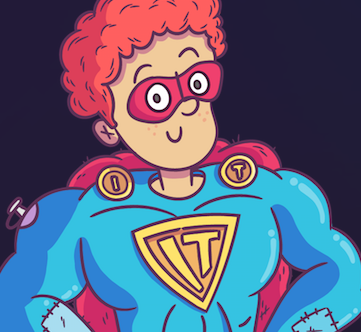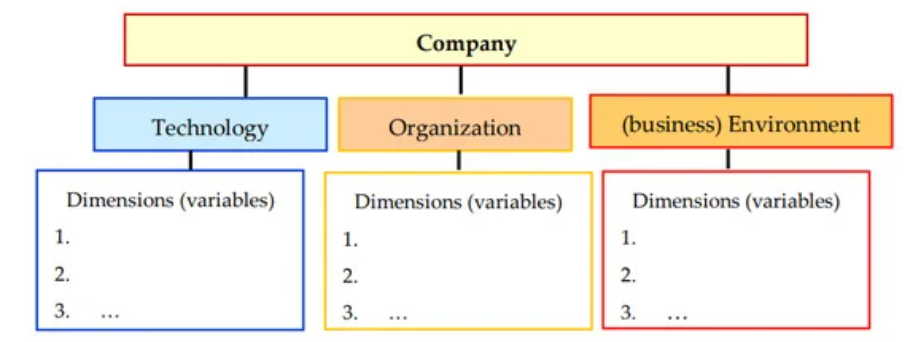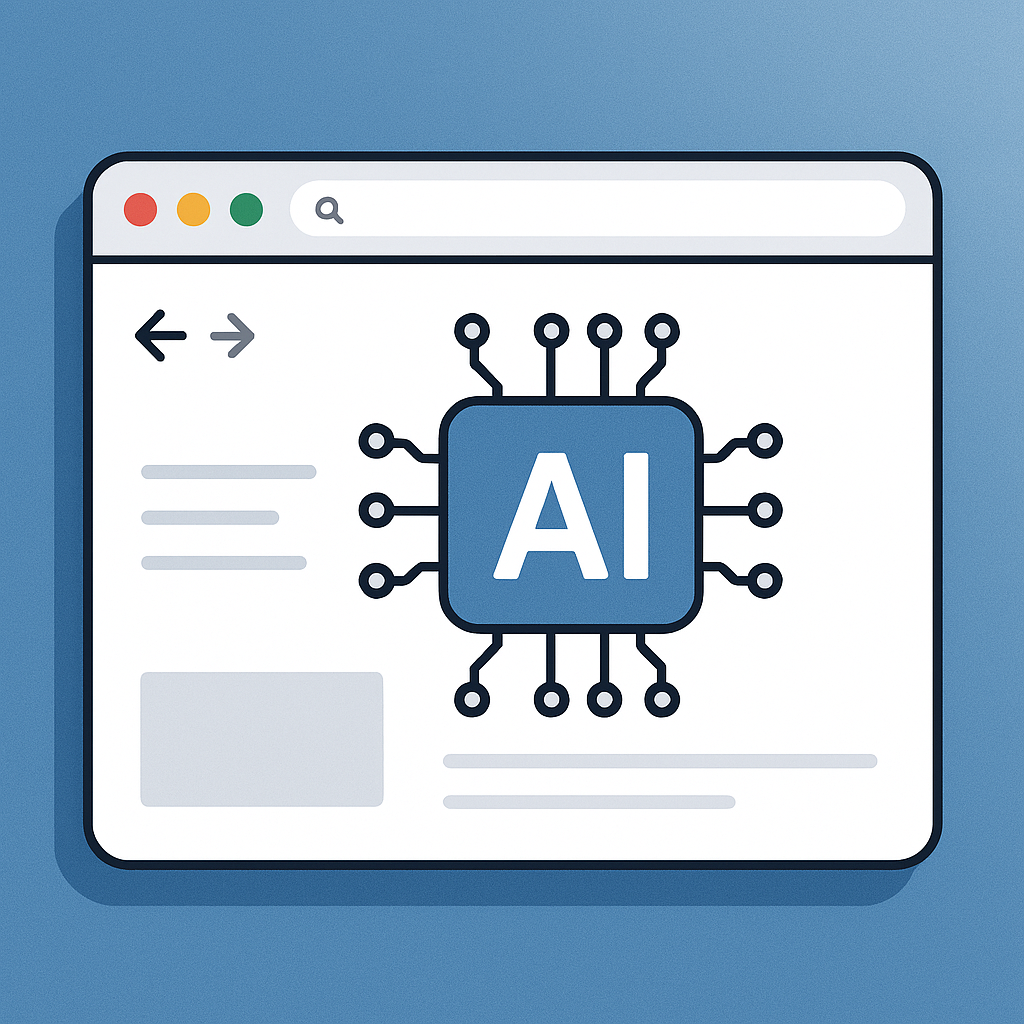
Overview of the Technology-Organization-Environment (TOE) Framework
Definition and Meaning of TOE Framework
The Technology-Organization-Environment (TOE) framework offers a comprehensive approach to understanding the multifaceted factors influencing how organizations adopt and implement technological changes. Developed to assist researchers and practitioners alike, the TOE framework lists three critical components: technology, organization, and environment.
- Technology refers to the available tools, systems, and practices that can be employed, ranging from simple software solutions to advanced AI systems.
- Organization focuses on the company's structure, resources, and capabilities, as well as its culture and management style.
- Environment encompasses external factors such as regulations, market trends, and competitive pressures that could impact technology adoption.
The TOE framework acts like a compass by mapping these dimensions, guiding organizations in navigating their technological landscape.
Significance of TOE Framework in Business
Integrating the TOE framework within business strategies can significantly enhance decision-making processes. For instance, a tech startup might leverage this model when entering a new market. They can develop a tailored strategy that aligns well with their goals by analyzing their technological assets, assessing their organizational readiness, and considering the regulatory environment.
Here are a few reasons why the TOE framework is essential for businesses:
- Holistic Understanding: It encourages businesses to consider all influencing factors, avoiding narrow perspectives.
- Strategic Decision-Making: Organizations can make informed technology decisions aligned with their capabilities and external environment.
- Risk Mitigation: Understanding these dynamics helps identify potential risks early, ensuring smoother transitions during tech adoption.
In essence, the TOE framework illuminates the path for businesses and enhances their agility in an ever-evolving technological landscape.
Role of Technology in TOE Framework
Incorporating Technological Advancements
Building on the foundational understanding of the TOE framework, technology emerges as a critical enabler in achieving business objectives. In today's fast-paced world, incorporating technological advancements is not merely beneficial but essential for survival.
Consider a retail business that integrates e-commerce and mobile payment systems. By harnessing these technological advancements, they extend their reach to a wider audience and enhance customer convenience. Some effective strategies include:
- Adopting Cloud Computing allows businesses to scale operations efficiently while reducing costs.
- Utilizing Data Analytics: Organizations can better understand customer behaviors, leading to personalized marketing efforts.
- Implementing Automation Tools: Such tools can streamline processes, reduce human error, and boost productivity.
Impact of Technology on Organizational Processes
The infusion of technology significantly alters organizational processes, often leading to enhanced efficiency and innovation. For instance, when a manufacturing company adopts IoT devices, it can monitor equipment in real time, predict maintenance needs, and optimize production schedules. This proactive approach yields several benefits:
- Faster Decision-Making: Real-time data enables quicker responses to changes in production demands or market trends.
- Enhanced Collaboration: Technology facilitates communication across departments, breaking down silos and fostering teamwork.
- Improved Quality Control: Automated systems can detect inconsistencies early, reducing waste and increasing product reliability.
Incorporating technology into organizational processes drives operational efficiency and positions businesses to better adapt to the dynamic landscape of their industries.

Organizational Structure in TOE Framework
Designing Effective Organizational Structures
As we delve deeper into the TOE framework, the focus shifts towards the organizational structure—a vital element shaping how technology is utilized and workflows are managed. Designing effective organizational structures fosters an environment where innovation can flourish.
For instance, a company adopting a flat organizational structure encourages open communication and agile decision-making. This structure often leads to:
- Faster Collaboration: Teams can engage more freely, enabling quicker responses to market changes.
- Empowered Employees: Employees feel valued and trusted to make decisions, often leading to higher morale and productivity.
- Enhanced Adaptability: Organizations can swiftly pivot based on technological advancements or external pressures.
In practice, a startup might implement a matrix structure, allowing cross-departmental teams to tackle projects uniquely, thereby integrating diverse perspectives and expertise.
Aligning Organizational Goals with Technological Capabilities
Aligning organizational goals with technological capabilities is crucial for long-term success. When an organization’s technology strategy complements its mission, it creates a synergy that propels growth.
For example, if a company prioritizes customer satisfaction, advanced CRM systems can help achieve this goal by enabling personalized service and efficient customer handling. Here’s how to effectively align these elements:
- Define Clear Objectives: Identify key performance indicators (KPIs) that reflect organizational goals and technological objectives.
- Regular Assessments: Conduct periodic reviews of technology's impact on achieving organizational goals.
- Employee Training: Invest in ongoing training to ensure staff can effectively leverage new technologies.
By ensuring alignment, organizations can enhance their operational efficiency and create a cohesive strategy that drives sustained success in today's competitive landscape.
Environmental Factors and TOE Framework
Considering Environmental Sustainability
Continuing our exploration of the TOE framework, we now focus on environmental factors, an increasingly vital aspect of the business landscape. In today’s climate-conscious world, considering environmental sustainability is not just a trend; it's necessary for organizations striving to remain competitive and socially responsible.
For example, a manufacturing company might adopt eco-friendly materials and processes, demonstrating its commitment to sustainability. Here are some essential steps organizations can take to incorporate environmental considerations:
- Evaluate Resource Use: Conduct assessments on energy, water, and raw material consumption to identify areas for improvement.
- Implement Green Technologies: Integrating renewable energy sources and energy-efficient machinery reduces the carbon footprint and often lowers operational costs.
- Encourage Recycling Practices: Promoting a culture of recycling within the workplace can significantly minimize waste.
Adapting to Environmental Changes
Adapting to environmental changes requires organizations to stay vigilant and responsive to shifts in the external landscape. Economic fluctuations, regulatory changes, and evolving consumer preferences can significantly impact an organization’s operations.
For instance, consider a company in the agricultural sector that faces shifting climate patterns. They can adjust their strategies by monitoring these changes, such as increased rainfall or extended droughts. Here’s how organizations can effectively adapt:
- Stay Informed: Regularly review market trends and environmental reports to identify potential impacts on operations.
- Be Flexible: Develop a culture that embraces change, allowing teams to pivot and innovate when necessary.
- Engage Stakeholders: Collaborate with suppliers, customers, and regulatory bodies to ensure a comprehensive understanding of environmental impacts.
Embracing environmental factors within the TOE framework enhances an organization's resilience and fosters a sustainable growth strategy in an increasingly eco-conscious marketplace.
Implementing TOE Framework in Practice
Case Studies of Successful TOE Framework Integration
As we explore the practical implementation of the Technology-Organization-Environment (TOE) framework, looking at organizations that have successfully harnessed its principles is inspiring. One notable example is a leading retail giant that utilized the TOE framework to revamp its supply chain management.
By analyzing their technological capabilities, the company integrated advanced analytics and AI to forecast demand accurately. The organizational structure supported cross-functional teams that collaborated seamlessly. Additionally, they considered environmental factors, opting for sustainable logistics practices. As a result, they achieved:
- Reduced Lead Times: The more efficient supply chain cut delivery delays significantly.
- Cost Savings: Streamlined operations lowered operational costs by nearly 15%.
- Enhanced Customer Satisfaction: Increased efficiency translated into better service delivery, earning positive customer feedback.
Challenges and Solutions in Implementing TOE Framework
However, it’s essential to recognize that implementing the TOE framework is challenging. Common obstacles include resistance to change, inadequate training, and misalignment between technology and organizational goals.
To tackle these challenges, organizations can take proactive steps:
- Foster a Change-Ready Culture: Encourage a mindset that embraces innovation and flexibility.
- Provide Comprehensive Training: Equip employees with the necessary skills to use new technologies effectively.
- Regularly Review Alignment: Conduct assessments to ensure ongoing alignment between technological capabilities and organizational goals.
By anticipating challenges and devising effective solutions, organizations facilitate successful implementation of the TOE framework and position themselves for long-term success in an ever-evolving landscape.
Benefits of Adopting TOE Framework
Improving Competitive Advantage
Continuing our discussion on practical implementation, the benefits of adopting the Technology-Organization-Environment (TOE) framework are substantial, particularly in improving competitive advantage. Organizations that effectively leverage the TOE framework can differentiate themselves in saturated markets.
Take, for instance, a mid-sized technology firm that adopted this framework to streamline its product development processes. By aligning their technological capabilities with market demands and organizational strengths, they were able to:
- Accelerate Innovation: With cross-functional teams collaborating more efficiently, new product features were developed rapidly.
- Target Emerging Markets: The company identified previously overlooked demographics by understanding environmental factors, capturing a larger customer base.
- Enhance Brand Reputation: By demonstrating a commitment to sustainability through eco-friendly practices, the firm gained positive public perception and customer loyalty.
Enhancing Organizational Performance
In addition to competitive advantage, adopting the TOE framework significantly enhances organizational performance. Organizations often witness improved efficiency and effectiveness across various operations when all three elements are synchronised.
For example, a healthcare provider implementing a robust IT system to manage patient records witnessed:
- Streamlined Operations: Reduced administrative processes led to quicker patient admissions and discharges.
- Improved Patient Care: Enhanced data sharing among medical teams resulted in more coordinated care and better health outcomes.
- Higher Employee Morale: Empowered staff with the right tools led to a more satisfied workforce.
By embracing the TOE framework, organizations position themselves for competitive success and sustainable, long-term performance, ultimately crafting a vibrant and resilient enterprise.

Future Trends in the TOE Framework
Emerging Technologies Shaping TOE Framework
As we look forward, the Technology-Organization-Environment (TOE) framework is poised for transformation influenced by emerging technologies. Advancements like artificial intelligence, blockchain, and the Internet of Things (IoT) are redefining how businesses operate, driving them to rethink their strategies within this framework.
For instance, consider how AI can personalize customer experiences, allowing organizations to fine-tune their products and services based on real-time data. Here are some emerging technologies with significant implications for the TOE framework:
- Artificial Intelligence: Enhances decision-making and automates processes, requiring an adjustment in organizational structures to maximize efficiency.
- Blockchain Technology: Facilitates transparent transactions, necessitating changes in regulatory compliance and organizational trust models.
- IoT Devices: Provide valuable data and insights, prompting organizations to rethink operational strategies and environmental considerations.
Evolution of TOE Framework in the Digital Age
The digital age demands that the TOE framework evolve alongside these technological shifts. Organizations must adopt new technologies and be agile enough to integrate them effectively into their existing structures and environments.
For example, a financial institution might implement digital banking tools that transform customer interactions and internal workflows. This evolution includes:
- Adapting Agile Methodologies: Incorporating feedback loops and iterative processes to respond quickly to market changes.
- Reevaluating Organizational Culture: Fostering an environment of continuous learning to support technology adoption and innovation.
- Integrating Cybersecurity Measures: Ensuring data protection becomes a key organizational focus in light of increased digital interactions.
In summary, the future of the TOE framework will be characterized by continuous adaptation, focusing on integrating emerging technologies while aligning with organizational and environmental dynamics to remain competitive in this rapidly evolving landscape.




